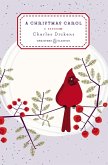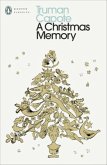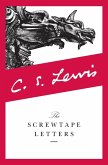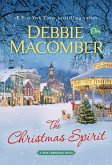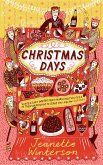Merry Christmas, everyone!
Bah! said Scrooge. Humbug!
With those famous words unfolds a tale that renews the joy and caring that are Christmas. Whether we read it aloud with our family and friends or open the pages on a chill winter evening to savor the story in solitude, Charles Dickens A Christmas Carol is a very special holiday experience.
It is the one book that every year will warm our hearts with favorite memories of Ebenezer Scrooge, Tiny Tim, Bob Cratchit, and the Ghosts of Christmas Past, Present, and Future and will remind us with laughter and tears that the true Christmas spirit comes from giving with love.
With a heartwarming account of Dickens first reading of the Carol, and a biographical sketch.
Bah! said Scrooge. Humbug!
With those famous words unfolds a tale that renews the joy and caring that are Christmas. Whether we read it aloud with our family and friends or open the pages on a chill winter evening to savor the story in solitude, Charles Dickens A Christmas Carol is a very special holiday experience.
It is the one book that every year will warm our hearts with favorite memories of Ebenezer Scrooge, Tiny Tim, Bob Cratchit, and the Ghosts of Christmas Past, Present, and Future and will remind us with laughter and tears that the true Christmas spirit comes from giving with love.
With a heartwarming account of Dickens first reading of the Carol, and a biographical sketch.

Der Dickens-Klassiker in neuem Gewand
Scrooge heißt der Mann, der von Weihnachen so gar nichts wissen will. Sein Leben erschöpft sich im Nachrechnen des Kontostandes, er ist der verkörperte puritanisch-kapitalistische Geist Englands - und Charles Dickens erweckt für den Leser eine ältere, vorreformatorische Welt wieder; eine, in der man überschwänglich und "irrational" feierte, in der man noch anderes kannte als die Bilanz.
Deshalb ist seine Weihnachtsgeschichte zum Klassiker der Moderne geworden. Denn mit Weihnachten kommt alljährlich aufs Neue etwas anderes, eine Unterbrechung des Betriebs. In das Gemisch von ewigem Londoner Nebel und zeitgenössischen Industriedämpfen lässt Dickens ein Licht strahlen, das mit der Geburt des Erlösers in die Welt trat. Vielleicht haben ja alle Dickens-Romane etwas von einem herzerwärmenden Weihnachtsmärchen, weil sie einer Gerechtigkeitsidee folgen, die uns zuweilen naiv erscheinen mag. Abwechslungsreich in den Formaten und kühn in den Perspektiven hat P. J. Lynch das Buch illustriert.
Nur in einem Punkt muss man die Begeisterung einschränken: Kinder unter zwölf Jahren dürften von einer Geschichte überfordert sein, in der Hamlets Vater, die Börse und das britische Testamentsrecht vorkommen. Natürlich kann ein Vorleser diese Stellen überspielen - aber alles hat seine Zeit, und an die Stelle überzogener Bildungshuberei (ist sie nicht ihrerseits von gegenwärtig-kapitalistischem, erfolgssüchtigem Geist, den man an den Nachwuchs delegiert?), die schon die ganz Kleinen mit dem Kanon befrachten will, sollte eine realistische Beurteilung der kindlichen Aufnahmefähigkeit treten.
LORENZ JÄGER
Charles Dickens: "Eine Weihnachtsgeschichte". Aus dem Englischen übersetzt von Curt Noch. Mit Illustrationen von P. J. Lynch. Cecilie Dreßler Verlag, Hamburg 2007. 160 S., geb., 19,90 [Euro].
Ab 12 J.
Alle Rechte vorbehalten. © F.A.Z. GmbH, Frankfurt am Main



